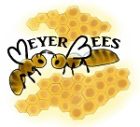Honey has been a treasured food for centuries, valued not only for its sweetness but also for its natural purity. Among the different varieties available, raw honey holds a special place. Unlike heavily processed honey found on many store shelves, raw honey is celebrated for maintaining its natural enzymes, pollen, and nutrients. But how does raw honey make its way from the hive into the jar without losing its essence? The process is both simple and fascinating, balancing respect for nature with careful handling.
The First Step: Harvesting the Honeycomb
Raw honey processing begins in the hive, where bees diligently collect nectar from flowers and convert it into honey. Over time, bees fill the honeycomb cells and cap them with a thin layer of wax. Beekeepers carefully remove the frames filled with capped honeycomb, making sure to disturb the hive as little as possible. This step is essential because timing matters: honey must be harvested when it’s fully ripened and sealed by the bees to ensure proper moisture content and flavor.
Uncapping the Honeycomb
Once the frames are removed, the next step is uncapping. Each cell of the honeycomb has a wax seal created by the bees to preserve the honey. To access the honey, these caps are gently removed using uncapping knives or specialized tools. This process allows the golden liquid inside to flow freely during extraction. The wax collected from this stage is often reused, which demonstrates the efficiency and sustainability of beekeeping practices.
Extraction: Spinning Liquid Gold
Perhaps the most fascinating part of raw honey processing is extraction. Beekeepers use a device called an extractor—a drum-like machine that spins the frames. Through centrifugal force, honey is pulled out of the comb without damaging it. This method ensures the honeycomb structure can be reused by the bees in the future. Watching honey stream from the frames into a collection tank is a reminder of just how much work thousands of bees contribute to every jar.
Filtering Without Overprocessing
After extraction, raw honey often contains tiny bits of wax, pollen, and other natural particles. While some impurities must be removed, over-filtering can strip honey of its beneficial properties. That’s why raw honey is only lightly strained, just enough to catch larger wax pieces while leaving behind pollen and natural enzymes. This step preserves honey’s nutritional integrity and its unique connection to the flowers and environment where it was produced.
Settling and Bottling
Once strained, honey is allowed to rest in settling tanks. During this time, any small air bubbles or wax particles rise to the surface and can be skimmed away. From there, the honey is ready for bottling. Unlike commercial honey, which is often pasteurized and heated at high temperatures, raw honey is bottled at room temperature. This careful approach ensures that the texture, flavor, and beneficial compounds remain intact. Each jar is, in essence, a snapshot of the season’s blooms and the bees’ hard work.
The Unique Qualities of Raw Honey
What sets raw honey apart from processed varieties is what it retains. Natural enzymes like glucose oxidase, traces of pollen, and antioxidants all remain in raw honey, contributing to its flavor complexity and potential health benefits. The taste varies depending on the flowers the bees visited, meaning each batch has its own distinct character. This makes raw honey not only a sweetener but also a reflection of the landscape and environment in which it was created.
A Process Rooted in Nature and Respect
Raw honey processing is a delicate blend of tradition, respect for the bees, and minimal interference. From harvesting the comb to gently bottling the final product, each step aims to preserve what nature has already perfected. The journey from hive to jar is a reminder of how closely humans are connected to bees and their extraordinary work. When you enjoy a spoonful of raw honey, you’re not just tasting sweetness—you’re experiencing a natural story written by flowers, bees, and careful hands.
